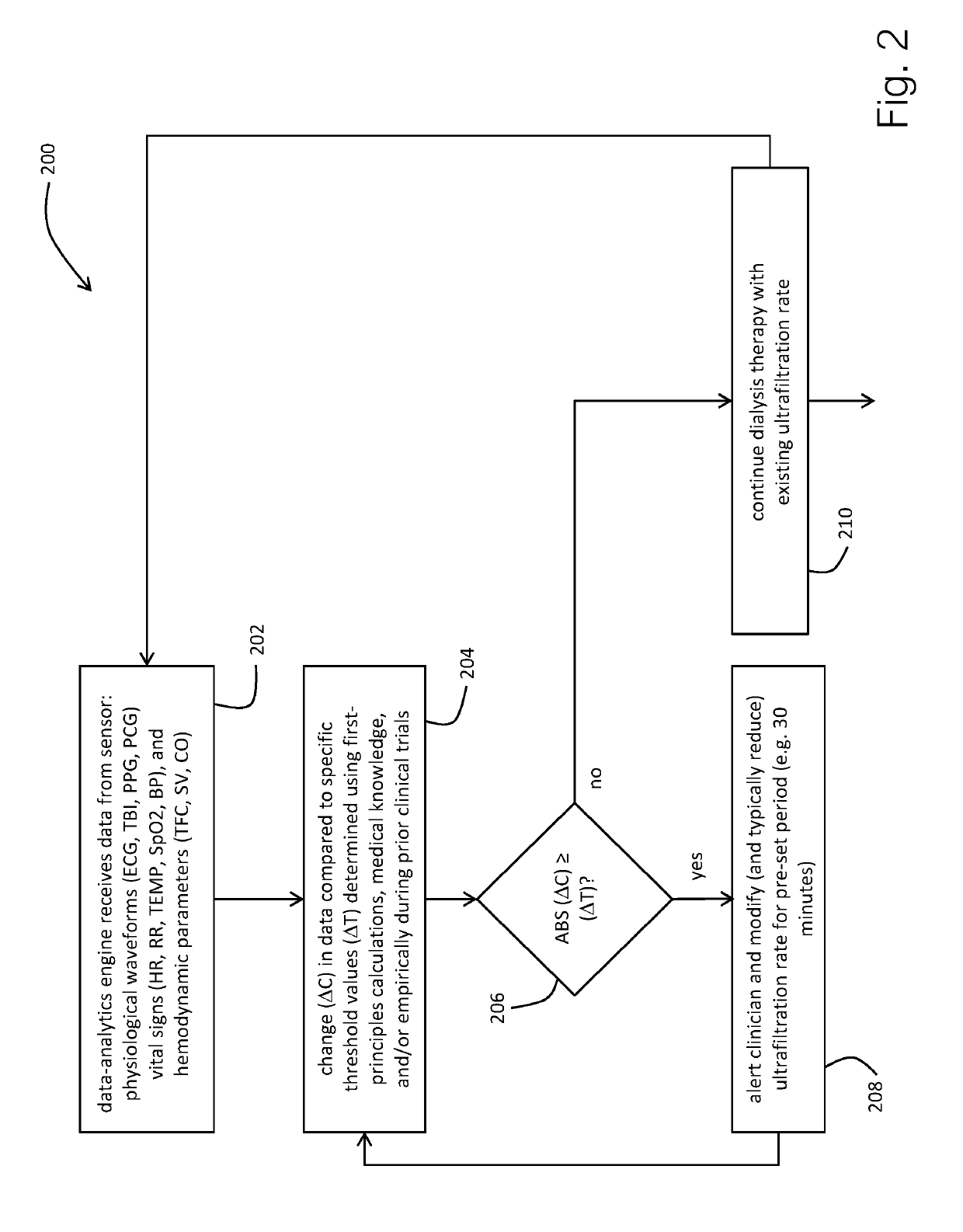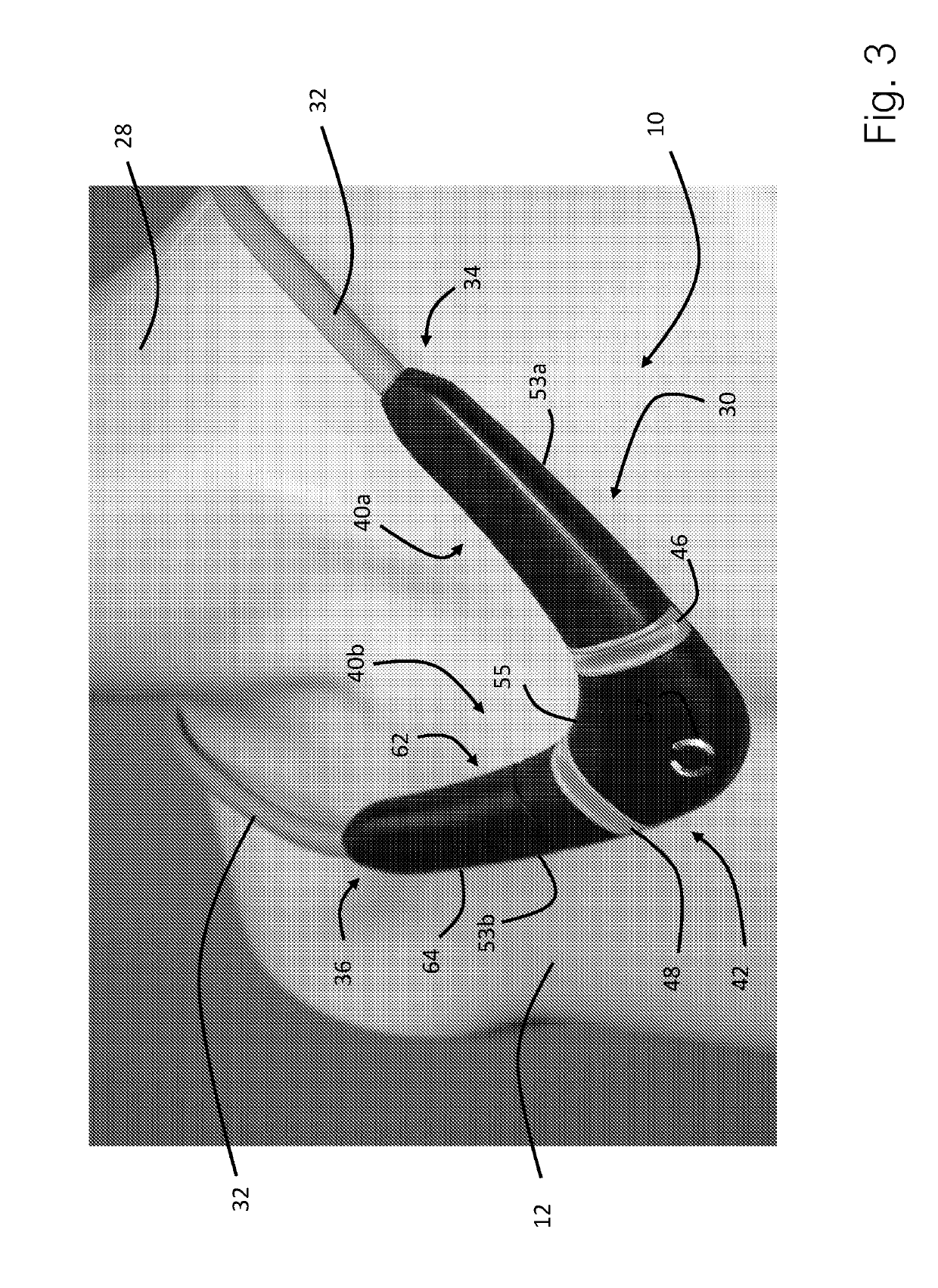Physiological monitor for monitoring patients undergoing hemodialysis
a technology for monitoring patients and monitors, applied in the field of physiological monitors for monitoring patients undergoing hemodialysis, can solve the problems of nullifying values, affecting treatment, and measurement errors, so as to facilitate monitoring, improve repeatability and reproducibility of measurements, and improve patient monitoring.
- Summary
- Abstract
- Description
- Claims
- Application Information
AI Technical Summary
Benefits of technology
Problems solved by technology
Method used
Image
Examples
Embodiment Construction
1. Monitoring ESRD Patients During Hemodialysis
[0070]As illustrated in FIG. 1, a sensor 10a-f according to the invention can be used to measure a collection of ESRD patients 11a-f connected to individual dialysis machines 13a-f. The dialysis machines, for example, may be located in a single dialysis clinic. Each sensor 10a-f, as described in more detail below with reference to FIGS. 3 and 4 below, continuously measures a collection of time-dependent physiological waveforms (ECG, TBI, PPG, PCG), vital signs (HR, RR, TEMP, SpO2, and BP) and hemodynamic parameters (TFC, SV, CO) and then wirelessly transmits data indicating these parameters to a central station 100. The sensor 10a-f typically measures waveforms at relatively high frequencies (e.g. 250 Hz) compared to the vital signs and hemodynamic parameters (e.g. once every minute). The sensor 10a-f measures the time-dependent waveforms directly from the patient with embedded sensing elements, described in more detail below. Using com...
PUM
 Login to View More
Login to View More Abstract
Description
Claims
Application Information
 Login to View More
Login to View More - R&D
- Intellectual Property
- Life Sciences
- Materials
- Tech Scout
- Unparalleled Data Quality
- Higher Quality Content
- 60% Fewer Hallucinations
Browse by: Latest US Patents, China's latest patents, Technical Efficacy Thesaurus, Application Domain, Technology Topic, Popular Technical Reports.
© 2025 PatSnap. All rights reserved.Legal|Privacy policy|Modern Slavery Act Transparency Statement|Sitemap|About US| Contact US: help@patsnap.com



